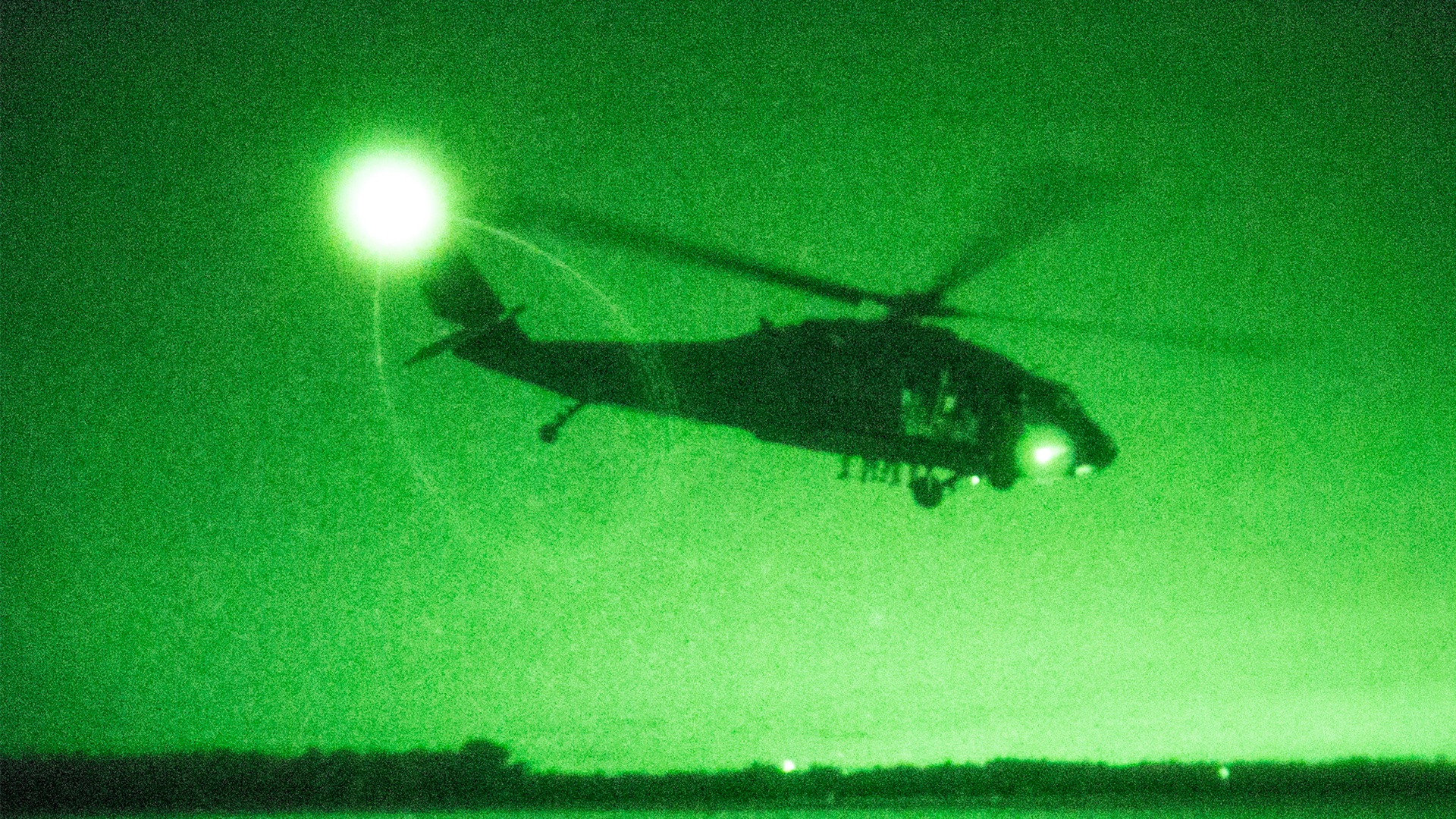

U.S. forces on Thursday morning carried out two separate operations targeting senior ISIS leaders in northern Syria that resulted in the deaths of at least three senior leaders.
One, conducted by helicopter near the village of Qamishli, reportedly targeted Rakkan Wahid al-Shammri who, according to a statement from United States Central Command, was “known to facilitate the smuggling of weapons and fighters to support ISIS operations.”
According to U.S. Central Command spokesman Col. Joe Buccino, al-Shammri was killed during the operation and one of his associates was wounded. Two additional ISIS members were also reportedly captured.
The statement from CENTCOM also said that no U.S. forces or local civilians had been killed or injured during that raid, and that it was carried out without any loss or damage to U.S. equipment.
During the raid that killed al-Shammri, local sources described to Reuters U.S. forces landing shortly after midnight and telling residents to turn off their lights and stay indoors.
The New York Times reported that the Syrian Observatory for Human Rights described U.S. forces raiding a private home before killing a man living there and arresting family members. According to the Times, that group’s director, Rami Abdulrahman, said that paramilitary forces allied with the Syrian government had engaged U.S. forces, who returned fire and wounded several of the fighters.
While little is known about the composition of the attack force deployed by CENTCOM, military journalist Wesley Morgan pointed out on Twitter that, in contrast to previous counterterror operations executed in Syria, CENTCOM did not indicate that partner forces like the Syrian Democratic Forces were present.
Elsewhere in Syria, the Associated Press reported that a U.S. airstrike conducted Thursday had killed Abu Ala, described as the second-in-command for ISIS forces in Syria, and Abu Mu’ad al Qahtani, another leader within the militant group.
“We will conduct operations where we need to if there is a threat against U.S. personnel, our allies or partners, or our interests,” Pentagon spokesman Brig. Gen. Patrick Ryder told reporters on Thursday.
Subscribe to Task & Purpose Today. Get the latest military news, entertainment, and gear in your inbox daily.
These dual operations, the raid and airstrike, constitute a relative uptick in activity among U.S. forces in the latest forgotten battlefield of the Global War on Terror.
While the U.S. military has conducted multiple special operations raids and aistrikes in northern Syria in recent years — like the Delta Force raid that resulted in the death of ISIS leader Abu Bakr al-Baghdadi in 2019 — it’s worth noting that this particular raid constituted “the first known [U.S.] operation against the group in a zone held by forces loyal” to Syrian President Bashar al-Assad, as Reuters reports,
Indeed, as our colleagues at The War Zone pointed out, Syrian government troops still control territory near Qamishli near the border with Turkey despite the fact that the majority of northeastern Syria is controlled by the U.S.-backed SDF.
News of the raid and airstrike comes months after the U.S.-led coalition forces captured a senior ISIS leader, identified by military officials as a “bomb maker and operational facilitator” Hani Ahmed al-Kurdi, in a counterrorism operation executed in the northern city of Aleppo in June.
Before that, in February, U.S. special operations forces carried out a raid that led to the death of ISIS leader Abu Ibrahim al Hashimi al Qurayshi during a raid on his home on northern Syria, Al Jazeera reported.
The U.S. currently maintains 900 troops, primarily special operations forces, to provide to “advise and assist” the SDF in the ongoing fight against ISIS, which then-President Donald Trump declared over in December 2018. (The group’s last territorial enclave officially fell to U.S. and partner forces in March 2019.)
That “defeat” was short-lived: an August 2019 DoD Inspector General report for Operation Inherent Resolve indicated that despite it’s territorial losses, ISIS was “resurging” in Syria “in part because “the Iraqi Security Forces (ISF) and Syrian Democratic Forces (SDF) remain unable to sustain long-term operations, conduct multiple operations simultaneously, or hold territory” with U.S. assistance gone.
Indeed, Defense Department’s fiscal year 2023 budget request contained $5.5 billion in support of operations to advise and assist partner forces in both Syria and Iraq “until they can independently defeat ISIS,” according to the latest DoD IGl report regarding U.S. overseas contingency operations.
“While ISIS is territorially defeated, its leadership degraded, and its ideology widely condemned, the group still poses a threat to the interests of the United States,” the report says. “Remnants of ISIS remain active and still have supporters in Iraq and Syria who continue to endorse the spread of violence across the globe and who seek to regain their previous territory.”
The latest on Task & Purpose
- These are the worst pieces of military gear ever issued, according to veterans
- The Marine Corps’ new littoral combat team is changing the Marine rifle squad
- How Air Force maintainers achieved a rare perfect inspection on a 49-year-old aircraft
- Why hundreds of Camp Pendleton Marines have been stuck in sweltering hot barracks for years
- The Air Force has finally rescued a stranded Osprey aircraft from a remote Norwegian island
Want to write for Task & Purpose? Click here. Or check out the latest stories on our homepage.
